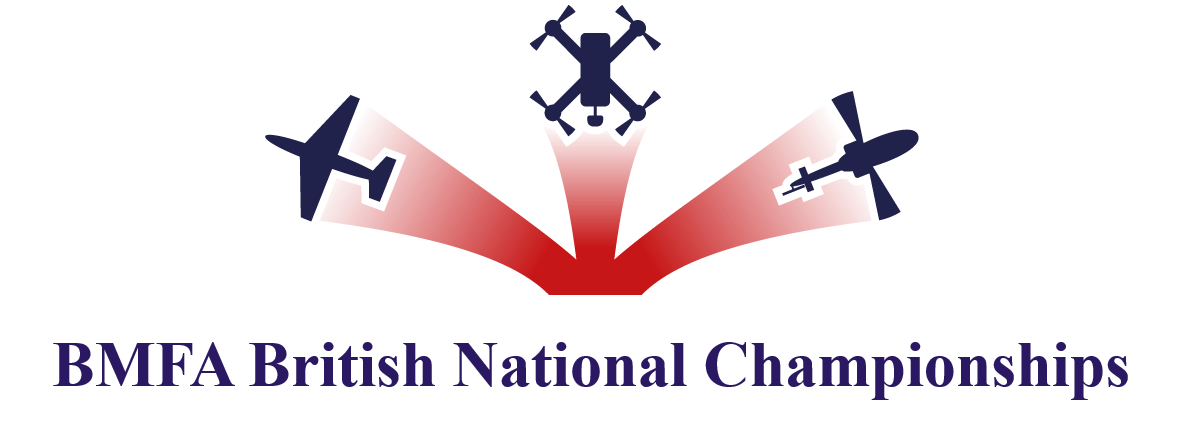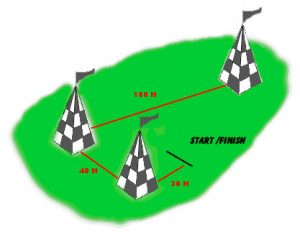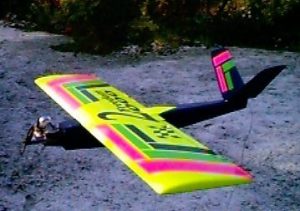Pylon Racing 2019
Once again, welcome to the NAT’s! There’s so much to see and do, where do you start? Well, if you are interested in R/C racing, Pylon Racing is the one area you must visit at the East end of the main runway.
Pylon Racing can be described simply as “fly fast, tight and turn left”. All pylon disciplines use radio controlled models and fly anti-clockwise around a triangular course for ten laps as fast as possible beginning with a standing start. The course is defined by three pylon flagpoles, and any “cuts” (i.e. turning inside a pylon) are penalised by having 10% added to the final heat time. Receiving two cuts or not finishing results in a disqualification from that heat and a massive 200 second time penalty being awarded for that heat. The BMFA Nationals presents the best opportunity to watch this fast, furious and exciting racing in all its forms.
There are several disciplines spanning both electric and IC power, which together cater for all standards of model building, pilot skill, technical development and flying speeds so that all interests and abilities can be accommodated. Regular league race meetings are held throughout the year, at various venues around the country for all disciplines and the BMFA Nationals is the premier event which determines the BMFA Nationals Champion in each discipline.
C32 and E2K are recognised as entry points into this exciting sport! These classes are competitive, economical and great fun and are run on a short course (10 laps of 270m each). Competitors of these classes range in experience from 6 months to 30 years and all will make you most welcome. C32 is new for 2019 and heralds the return of the Club20 racer airframes. Models like the Cotswold Tracer and DB Tempo are being dusted off to race again. Motors are limited to West32, SC32 or ASP32 and the propeller is the APC 8×8. These have been proven to be easy to use, affordable and club site friendly. This format has given us some exceptionally tight racing. Expect to see some light (and not so light) drubbing during the heats.
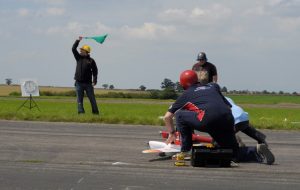 The electric E2K class uses a budget 3536, 1450kV out-runner motor and standard 4S, 2200mAh, LiPo batteries. All motor ESCs are programmed to have a fixed, maximum RPM so that racing is dependent largely upon pilot skill and not upon specialized equipment. The aircraft for both classes are relatively low cost whether ARTF, kit or built from a plan. They handle very well and, as noise levels are comparable with the average sport model, they can be flown at your local club field. Around eight race meetings a year are held at approximately, monthly intervals between March and October. If you have the urge to have a go at this simplest form of throttle bending, you will find a helpful, friendly bunch of modelers, willing to assist. Speak to any of us (preferably when we’re not flying!) and we will gladly give you all the information you need. C32 and E2k are friendly, competitive and guaranteed to improve your flying!
The electric E2K class uses a budget 3536, 1450kV out-runner motor and standard 4S, 2200mAh, LiPo batteries. All motor ESCs are programmed to have a fixed, maximum RPM so that racing is dependent largely upon pilot skill and not upon specialized equipment. The aircraft for both classes are relatively low cost whether ARTF, kit or built from a plan. They handle very well and, as noise levels are comparable with the average sport model, they can be flown at your local club field. Around eight race meetings a year are held at approximately, monthly intervals between March and October. If you have the urge to have a go at this simplest form of throttle bending, you will find a helpful, friendly bunch of modelers, willing to assist. Speak to any of us (preferably when we’re not flying!) and we will gladly give you all the information you need. C32 and E2k are friendly, competitive and guaranteed to improve your flying!
A step up from this .32 size IC motor class is the FAI–F3T class which is based on the popular American class Q40 and is run on a long course (10 laps of 400m each). This uses .40 size motors (6.5cc swept volume) with fuel which contains 15% Nitromethane. Although the engines and propellers are built specifically for racing, they are readily available and the rules forbid any modification to either by competitors. The sleek airframes are made from composite materials and again are available from various vendors. This results in higher performance but equal equipment with higher speeds without the need for highly technical, specialist engine expertise and is ideal for those who wish to fly fast but who do not wish to get too involved with the technical side of the pylon racing. This class is very popular and will be flown at this year’s BMFA Nationals.
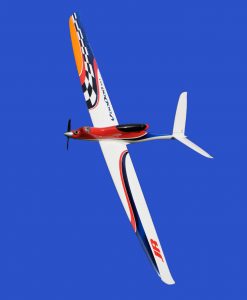 The pinnacle of international IC pylon racing is the FAI-F3D class which also runs under FAI international rules on the long course. This is the highly technical end of the sport. The models are invariably made from composite materials (for which there are a number of kit manufacturers) to withstand the 45g acceleration forces experienced when turning at full speed around a pylon. Although any .40 size engine is allowed the vast majority of teams use the MB-Profi 40 engine which develops in excess of 4.3HP at 31,500rpm on straight methanol and castor oil fuel. These engines have a rear exhaust with full length tuned-pipe and use propellers made from carbon fibre. The high aspect-ratio wing and sleek fuselage profiles of these models make them very distinctive in the sky. The photo shows the very latest top end F3D racer built from Carbon and Kevlar composite materials. Typical speeds attained are 350km/hour. The class gives a great opportunity for those who are technically able in high performance engine tuning and model and propeller design.
The pinnacle of international IC pylon racing is the FAI-F3D class which also runs under FAI international rules on the long course. This is the highly technical end of the sport. The models are invariably made from composite materials (for which there are a number of kit manufacturers) to withstand the 45g acceleration forces experienced when turning at full speed around a pylon. Although any .40 size engine is allowed the vast majority of teams use the MB-Profi 40 engine which develops in excess of 4.3HP at 31,500rpm on straight methanol and castor oil fuel. These engines have a rear exhaust with full length tuned-pipe and use propellers made from carbon fibre. The high aspect-ratio wing and sleek fuselage profiles of these models make them very distinctive in the sky. The photo shows the very latest top end F3D racer built from Carbon and Kevlar composite materials. Typical speeds attained are 350km/hour. The class gives a great opportunity for those who are technically able in high performance engine tuning and model and propeller design.
If you are interested in any of these RC disciplines, please consult the program timetable to see when each of disciplines are flying, and feel free to talk to any of us at the flight line. You will also find a wealth of information on the websites <http://www.ukpylonracing.co.uk> for C32 & E2K, and race and contact information for F3D and F3T on <http://www.bmpra.bmfa.org>. Please come and watch the racing. Also look out for the latest articles in the BMFA magazine.
Geb Jones
Pylon Racing Contest Director
